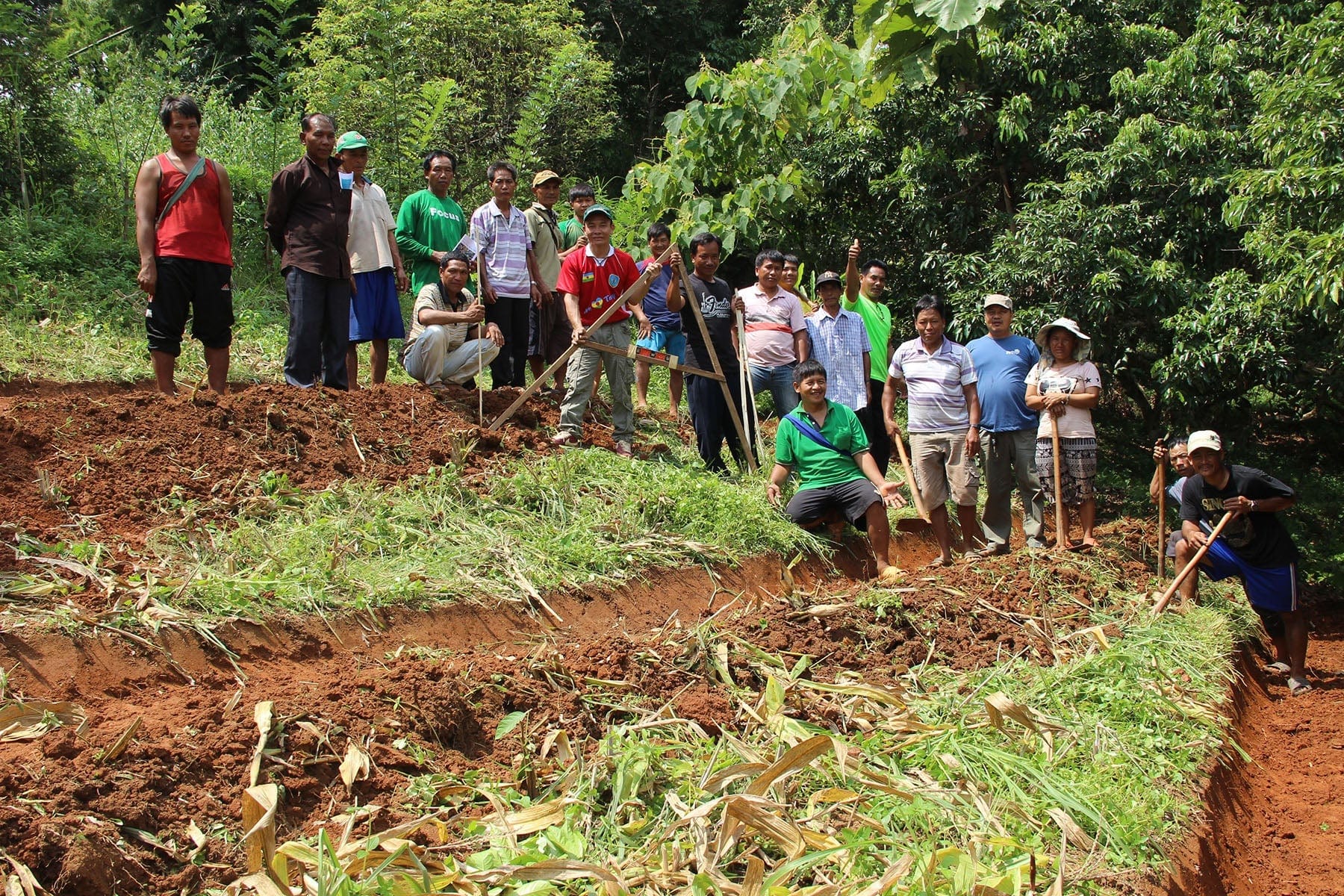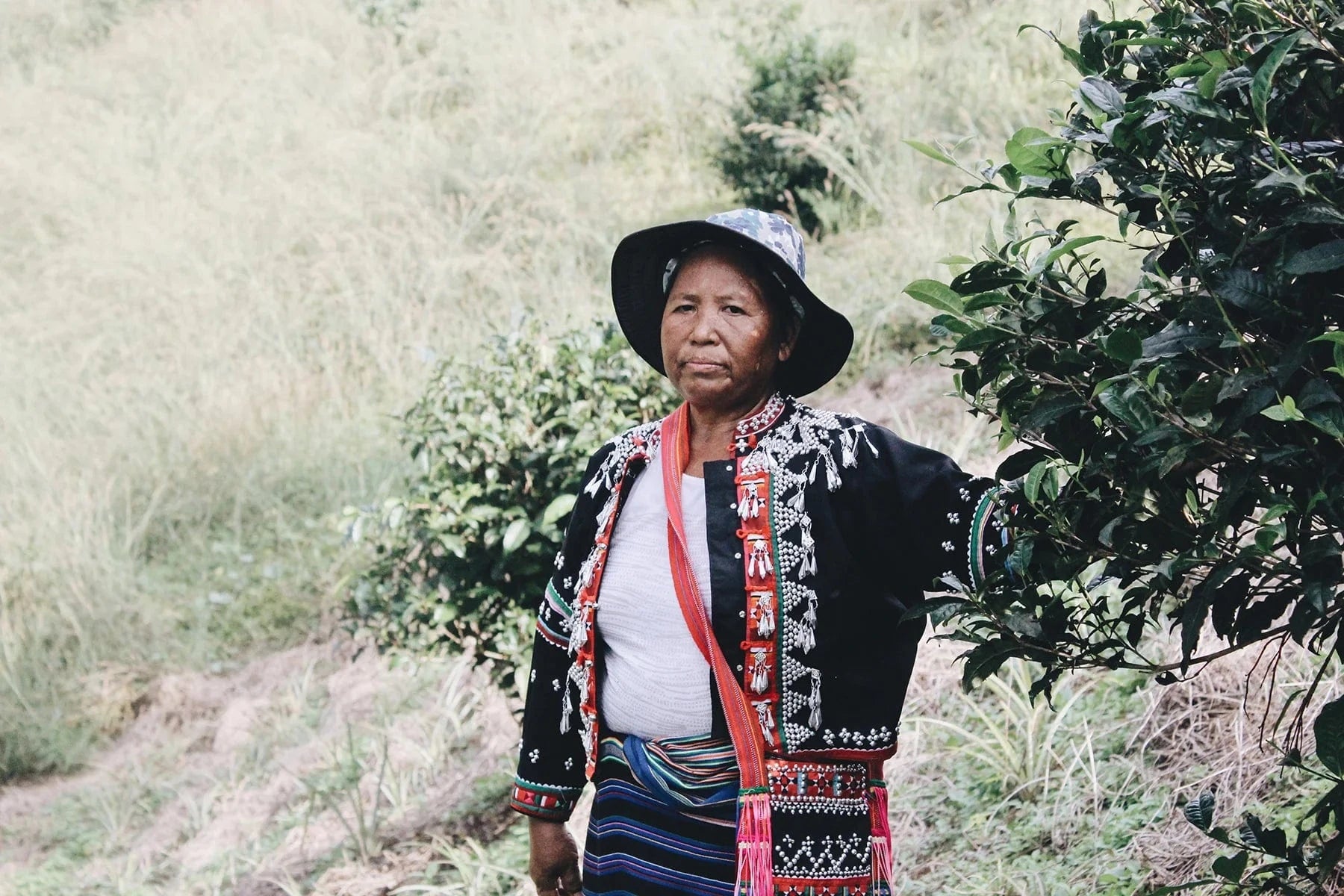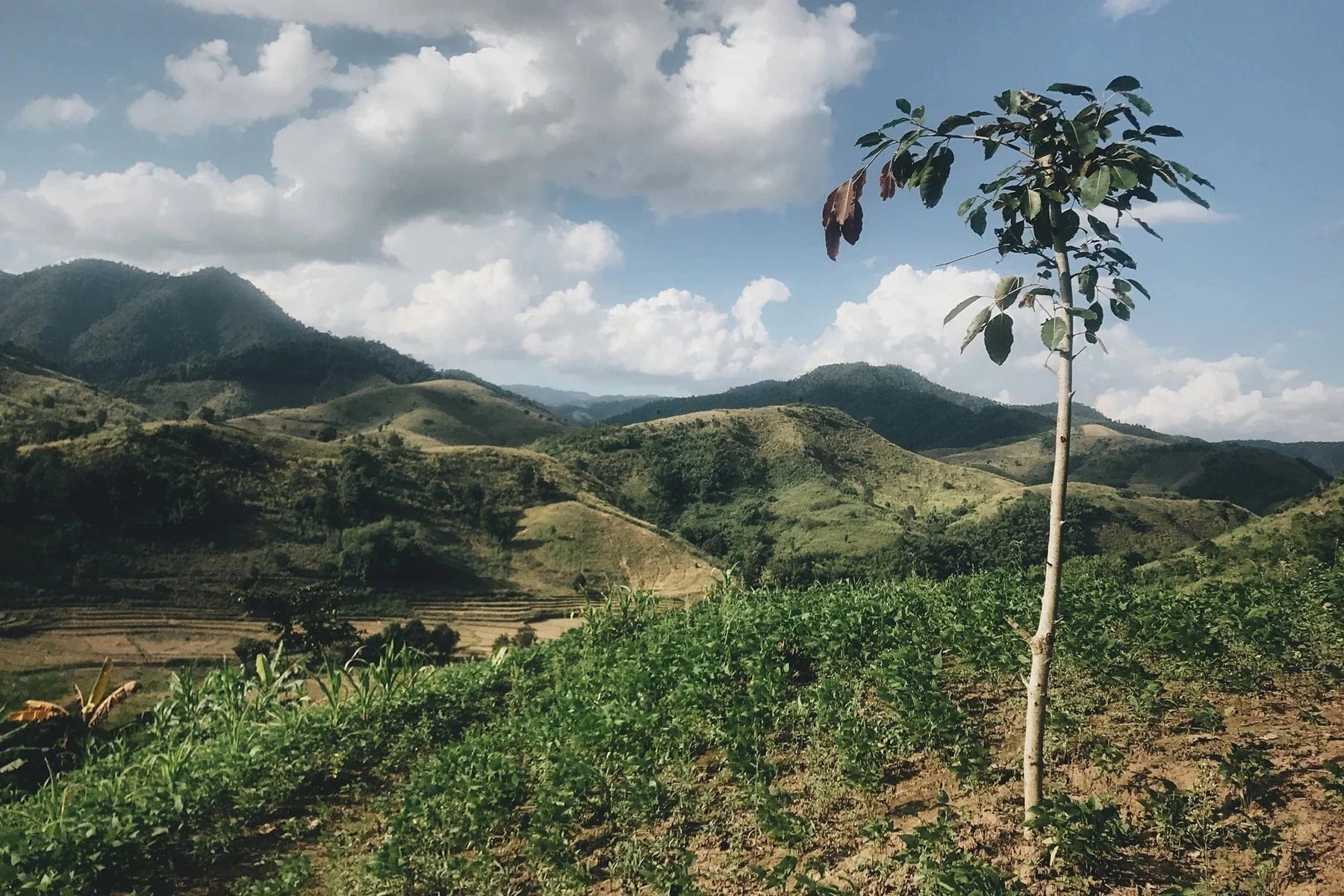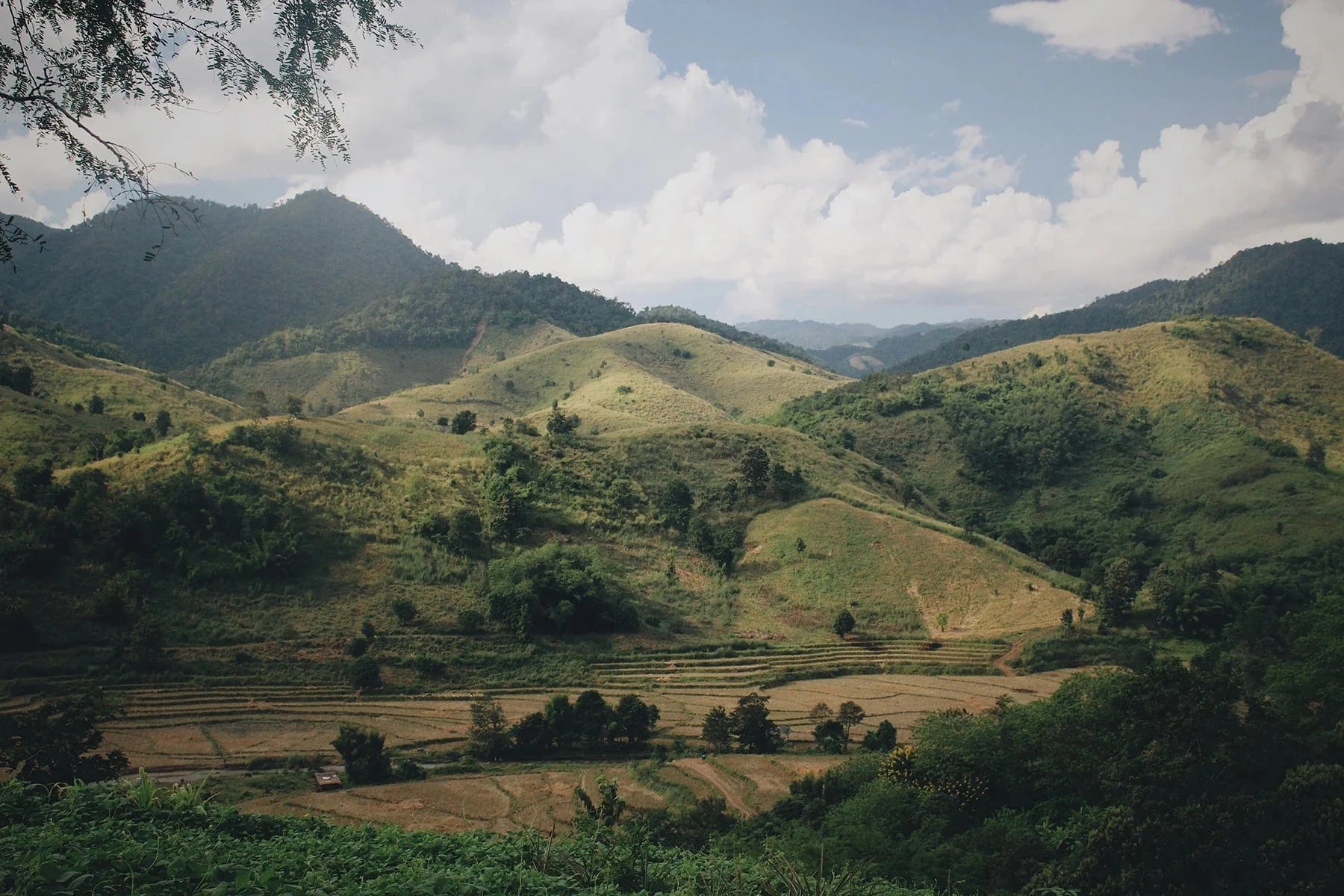Planting 375,000 Trees in Thailand for Watershed Restoration and Human Rights

Get news, updates, & event Info delivered right to your inbox:
Working At the Intersection of Reforestation and Human Rights
In a remote region near the border of Myanmar, woven into the very fabric of northern Thailand's rugged hill country, live a group of marginalized ethnic minorities. Commonly referred to as the hilltribes, many are refugees of civil strife in Myanmar and have been in Thailand for generations — but often aren’t recognized as citizens.
How did the hilltribes end up here? Myanmar has a tumultuous history of dictatorship and conflict between majority and minority ethnic groups. The hilltribes in Thailand are just one ramification of this. Forced to flee their homes and cross the border into the remote areas outside the city of Chiang Rai, they left everything behind to start a new life.
The road to salvation has been long and grueling. At first, the government wasn’t welcoming: they didn’t recognize them as refugees or offer any support — forcing them to rebuild from scratch. Because of this, they’ve lacked basic human rights for generations. This has left them extremely vulnerable: without citizenship, they have few legal rights and limited access to education, medical care, or land. With nowhere else to go, they’ve had to carve a living out of degraded hillsides, and acutely feel the effects of climate change in the form of unexpected drought seasons, soil erosion, wildfires and moisture loss.
With the help of our amazing on the ground partner, the hilltribes began using reforestation as a means to restore degraded ecosystems, earn income, and secure recognition from the Thai government. Against all odds, it worked and they have since been acknowledged and have been able to farm and manage the forest with greater security and peace.
An Ambitious New Initiative
This year, our partners have undertaken another ambitious effort: to empower approximately 1,139 members of the hilltribe communities to plant 375,000 more trees and restore 90,900 hectares of land within the Nam Kohk, Hoi Lui, and Mae Na Wong watersheds. The trees will be strategically planted on common and private lands in partnership with local authorities to improve food security, enhance livelihoods, and boost biodiversity. And as they grow, they’ll nourish and revitalize the soil, restore degraded habitat, improve water sources, and stabilize weather patterns in an area that’s at the forefront of climate change.
Creating diverse agroforests that are integrated within the surrounding landscape will improve the farmer’s economic resilience over time — and reduce pressure on forest ecosystems. The tree species and planting sites are selected by each participant based on their needs and preferences. They often include a mix of coffee, orange, longan, lychee, mango, jackfruit, papaya, teak, rattan, and more. Bamboo is also integrated within these plantings (or sustainably harvested from the forest) for construction materials, furniture making, and food.
Despite being located near water catchment areas, the hilltribe communities face water shortages. To help address this, our partner is teaching them how to build and maintain village and family cisterns. Built with reinforced concrete, they harness gravity to collect stream water during the wet season. During the dry season, the stored water will increase water security year round. Erosion is another challenge — and to combat it, many are creating contour strips of pineapple and other crops to conserve their soil. The contours are planted in horizontal lines along hillsides. When the rains come, the plants help to hold the soil together, protecting crops and reducing erosion.



Community Benefits
In addition to creating direct ecosystem benefits, this holistic program involves community forestry initiatives, savings and loan groups, and local leadership development. And it works: participating farmers are nearly 2X as likely to plant native tree species, have 37% higher crop yields, and 55% reduced levels of poverty. As poverty eases, there’s less competition for the resources needed for basic survival — and communities are able to come together to improve and conserve the environment in their subwatersheds. Our partner also advocates with the Thai government to promote human rights — and equips participating farmers to engage in constructive dialogue with local authorities around forest protection.
Another integral part of the program is the hands-on training that’s provided, using a specially developed curriculum that integrates the collective knowledge of thousands of rural farmers and covers topics like soil health, soil conservation, conservation agriculture, agroforestry, biointensive agriculture, and reforestation. During training, they learn about Farmer Managed Natural Regeneration (FMNR), agroforestry, living fences, living barriers, silvopastoral systems, wind breaks, and improved fallows. They’re also taught techniques for tree seed collection & treatment, tree nursery establishment & management, tree planting, grafting, pruning, thinning, coppicing, management of pests and diseases, and more.
Better crop yields, along with improved sources of clean water, lead to better family and community nutrition, health, and educational opportunities. 64% of the participants are women, many of whom are in leadership positions — and families that participate are 18% more likely to send their girls to secondary school. With more diverse and plentiful diets, families enjoy improved nutrition, and farmers can sell excess crops to generate income — and to invest in their community-led savings and loan groups. In turn, these groups invest in small businesses, children’s education, and more.

Income Security and Community Support
While the increased income is life-changing, hilltribes typically don’t have access to affordable credit, or a safe place to save their earnings. To help, farmers are trained to form savings and loan groups, enabling them to take control of their finances. There are currently 34 active groups, with women making up the majority of members. Children are allowed to join the groups too, giving them a chance to manage and build their own finances, and to help their families.
These groups also provide microfinance loans to their members, which can provide a needed financial boost toward establishing small family enterprises such as village stores and markets, livestock feed cooperatives and other backyard sources of supplemental income. Most loans are taken out for farming, blacksmithing and making handicrafts to sell. These groups effectively provide a safety net to farmers, which in turn helps protect the trees planted. Instead of cutting them down when a need arises, they have the ability to take out a loan instead.
Our partner also taps into the spiritual network and church leadership threaded throughout these communities. They accomplish this by building relationships with church leaders and Buddhist leaders in the program areas, and working together to coordinate workshops. During these workshops, the leaders identify challenges and develop action plans to address them. Linking with seminaries in Thailand and working with churches at the denomination council level has made it possible to inspire large numbers of future and current church leaders to reimagine the role of Christians in caring for the environment, which improves tree planting efforts and community support over time.
Feeling inspired? Stay tuned for more storytelling about this incredible project! In the meantime, support reforestation in areas like Asia!
Get news, updates, & event Info delivered right to your inbox:
Related Posts
Inspirational Quotes About Trees
16/12/2025 by Meaghan Weeden
The 9 Oldest, Tallest, and Biggest Trees in the World
11/12/2025 by One Tree Planted
Winter and Trees: How Do Trees Survive Winter?
09/12/2025 by One Tree Planted
Popular On One Tree Planted
Inspirational Quotes About Trees
16/12/2025 by Meaghan Weeden
The 9 Oldest, Tallest, and Biggest Trees in the World
11/12/2025 by One Tree Planted
What Causes Deforestation?
10/07/2025 by Meaghan Weeden
Fundraising Disclosures

Be Part of the
Restoration Movement
The Grove is more than just a monthly giving program: it's a vibrant community of individuals who are dedicated to reforestation and environmental restoration on a global scale.
As a member of The Grove, you affirm your commitment to restoring forests, nurturing biodiversity, and fostering positive global change.



